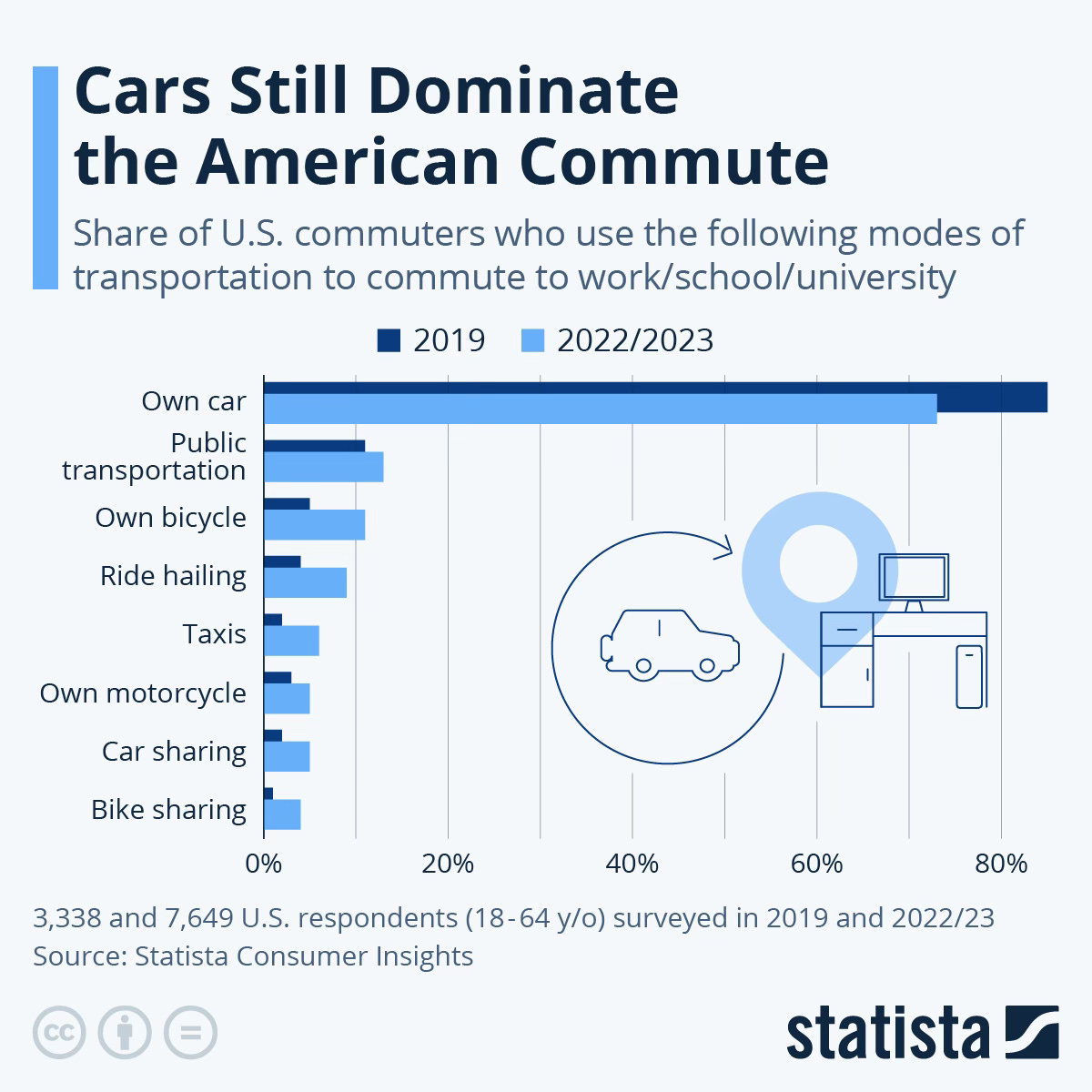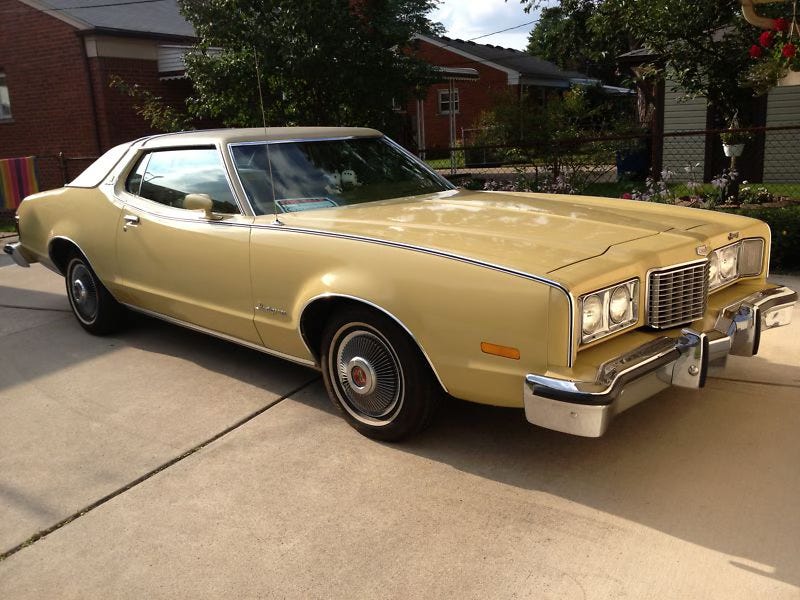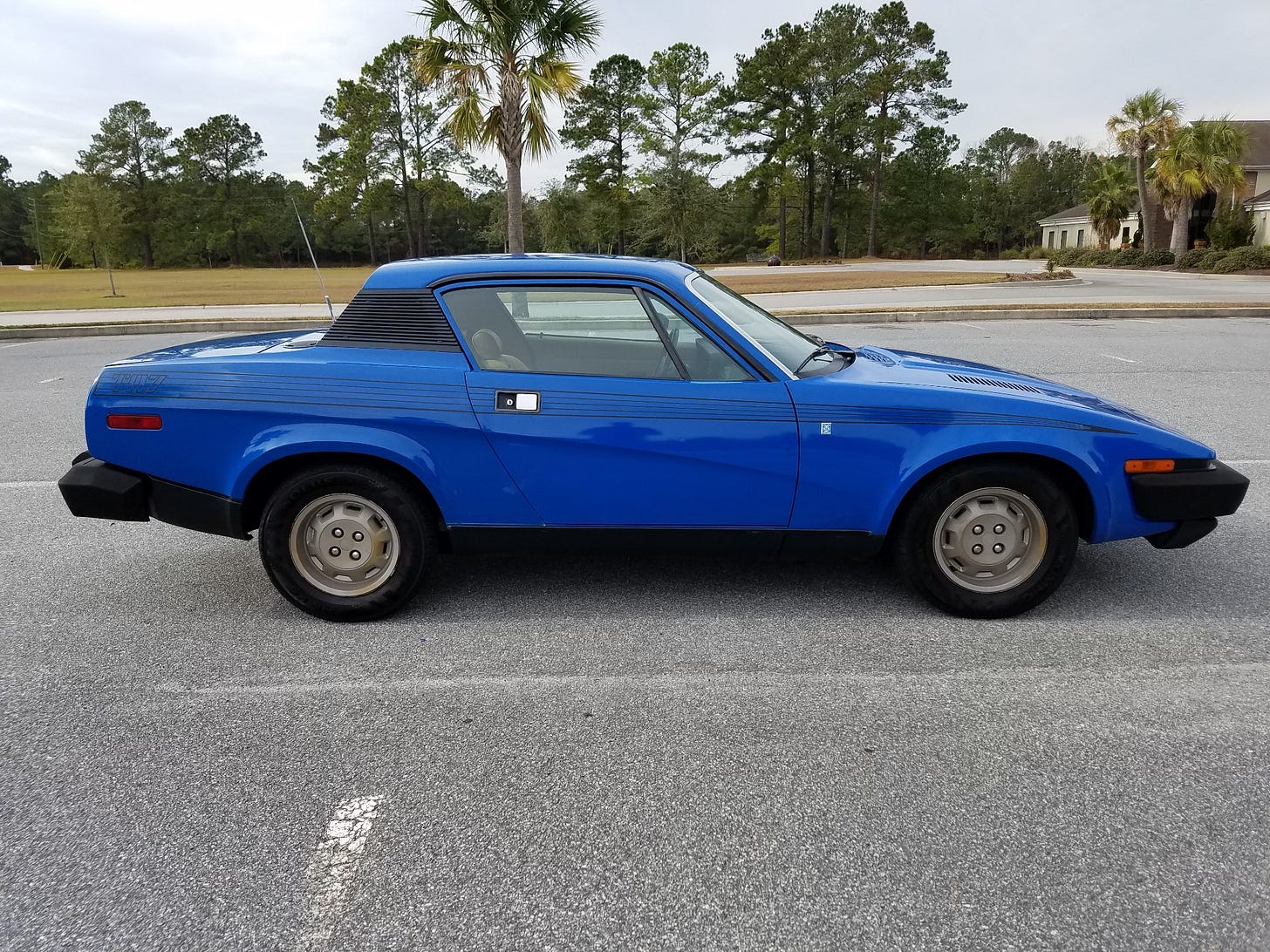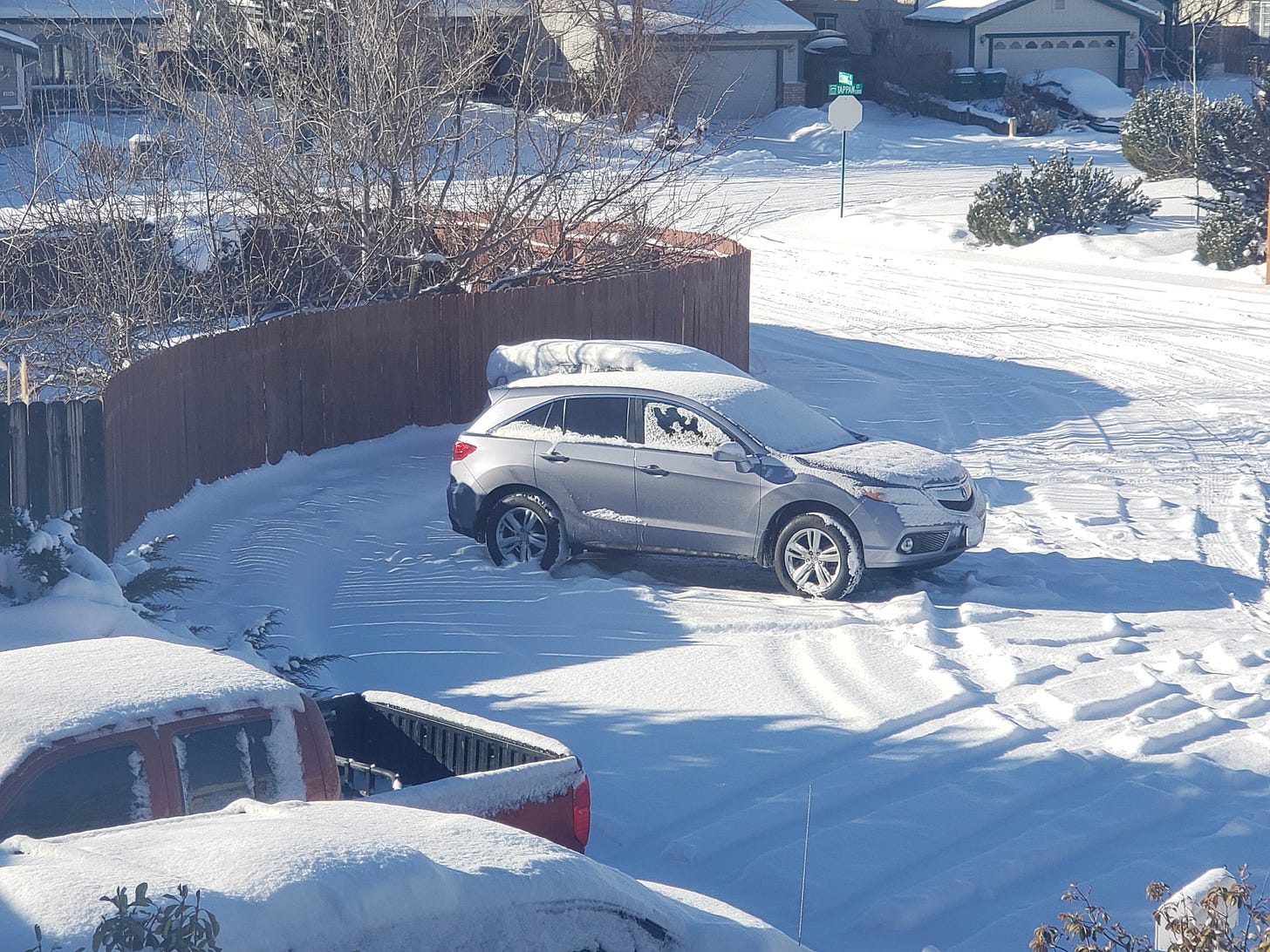“Yuck. No one cares what car you drive. It’s a hunk of metal with four wheels. Any of us can get into huge debt and mortgage our future to buy a Big Man’s Willy (BMW).” —Tim Denning, Aussie Blogger
As an American I don’t take driving for granted. We can refer to driving as a privilege, but the real truth is that for many, if not most of us, it is a necessity. One could say the automobile is the backbone for surviving and thriving in the USA.
Owning and driving a personal vehicle implies freedom at the most basic level. Car ownership can allow us to choose where we live and work, the ability to cover distances with ease, and convenience.
We buy for a variety of reasons such as utilitarian, reliability, practicality, and affordability. We sometimes use it to represent status and we’re attracted to vehicles that we perceive to mirror our own self-images.
Learning to drive is a right of passage. We all remember driver’s education. We reminisce what cars we learned on. We speak fondly of our first car, who we kissed and made out with in the back (or front) seat; whether we cruised or drag raced, and it opened up the first sign of mobility away from our parents, and a sneak peek at what freedom feels like.
Circa 1976-1979
Dad bought me a somewhat (un)reliable, used 1974 Mercury Montego MX Brougham during my senior year in high school. I might add (here) that my father had never bought a used car before this one. He leased and purchased his (own) new vehicles and ran them through his business as a write-off until the business was sold in 1975; the year our family moved to a large metropolitan area.
The distance between home and school was 5 miles by car. It wasn’t bike-able or walkable. I was also required to start working a (real) job to pay for gas and help with the car insurance.
Anyway, we purchased from a local dealership. Buying my first car wasn’t as exciting as you might imagine. My dad was practical, as I suppose all parents should be. Our choices were limited.
He wouldn’t look at cars or trucks made out of the US. He was born and raised in Michigan known as the (US) automobile capital of the world. I test drove and landed on the Montego. It drove like rowing a boat. Dad insisted it was going to be mine, or nothing at all. Faced with riding the bus to classes, or being stuck at home on my off time for the rest of the school year, I turned my sullen and ungrateful attitude around quickly.
After the money was paid and the paperwork signed, I peeled out of the parking lot as Dad put his own car into gear. I made the turn out of the dealership and crossed over a steeply raised railroad track ballast going 45mph.
I felt a clunk. The engine block dropped out of the car.
My dad drove us back to the lot and we spent the rest of the day arguing the purchased “as is” clause we’d just signed off on, minutes before.
Three weeks later the car was back in my possession, and in and out of the repair shop for the next two years.
My first new car and with that came a loan
As soon as I got my first bartending job and started making good money I got rid of the Montego. I honed in a Datsun 240Z. It had over 100,000 miles on it, but drove like how I imagined a car should drive, more like a striped-ass ape. It was overpriced and I didn’t know how to negotiate. I paid one of my good customers, who was also a blossoming friend from the bar I worked in, to come and work a deal for me.
He negotiated a deal alright. Negotiator talked me into buying a brand new British Leyland TR7.
“You won’t be buying somebody else’s junk. You’ll look great in it,” says Negotiator, who was no longer my blossoming friend. Negotiator did such a great job of overcoming my objectives—that the sales manager offered him a job selling exotic cars before my inked signature dried on the loan papers. (He later became an owner in the dealership… at least some good came of it.)
I blew out the transmission 19 months after signing the forty-eight month note. I sold the car to a collector, paid off the loan, and had $100 left to my name.
1980 - 2017
I bought and sold, rented, leased, borrowed, and shared a variety of cars and trucks. Vehicles such as a Ford F-150, a Dodge Ram 2500 Diesel, a Chevrolet Silverado; a Chevy Nova, Pontiac Bonneville, and an Oldsmobile 98; a Toyota Camry, an Eddie Bauer Ford Explorer, a Benz, and an Infinity; a Lexus, and a Subaru, to name a few, over those years.
A few lessons learned
In 1980 I bought a stolen 1974 brown Ford pinto station wagon from a Las Vegas shylock for $800. It cost me more to have the car dumped than it did to buy it.
Lessons learned: Don’t borrow money from the streets, and disposing a stolen car isn’t as easy as it sounds.
In 1994 I bought a (new) Mazda RX-7 for cash during a dealership weekend sale.
Lessons learned: Don’t buy a car with a rotary engine, they get hot. Don’t buy a 5-speed stick unless you know how to drive one, first. (Did you know you can accidentally shift into reverse on the freeway and not (completely) ruin the engine?) And, negotiating with a paper bag filled with cash is easier than taking out a loan.
In 1996 (with Dad’s help researching and choosing; and no, just to clarify—I did not learn my lesson the first time around) I bought a 1984 Buick Century from Mavis Patsy. It had 34,000 (original) miles on it and cost $4,000. Mavis, a 75-year old retired nurse “only drove it to and from work.” The name Mavis Patsy should have been the first indicator of what was in store for me for the next couple of years.
Never buy a car from an old lady named Mavis who claims she only drove five miles a day, five days a week, over a five-year time period. Yes, really she said this… and my father believed her.
Don’t buy American-made used cars unless providence is fully researched and the vehicle is thoroughly examined by a professional mechanic. Just don’t do it.
Suffice to say I will never buy another American-made (used) car, again.
From 2001 through 2017 I bought, borrowed, rented and shared a few clunkers.
Nothing stayed with me for long—the boring end result in driving was getting from Point A to Point B with little to no hassle—until I decided it was time to get something I really needed and desired.
At 60 years old, it was my experiencing a middle-aged crisis.
What is the BMW experience to you, compared to their marketing (ultimate driving machine)?”
“In 2001 I drove a brand new 540i BMW down the California 101 by way of the 154 on a short trip from Solvang to Santa Barbara; and knew at that moment it was my ultimate driving experience.”
Sixteen years later serendipity shined down and I found a 2007 BMW X 5i V8 for $10,999 in the middle of a Southern Illinois corn field, where the exotic car dealership was (literally) located.
Don’t judge.
Yet
I contacted the dealer, met with him, and test drove the car with no expectations. And boy, was I in for a surprise. I drifted it around corners, hugged tight curves, and sat back and enjoyed a smooth ride.
I paid a (local) independent mechanic to briefly inspect it. The car mechanically passed with a caveat: there was a lot of wear and tear. There were parts that needed replaced (soon). I convinced myself these could be done a little at a time; as money and time allowed.
The test drive captured me and the car body appeared in excellent shape. I contacted a local bank, got it financed, and drove it off the lot unable to believe my good fortune.
I charged across I-70, heading west, averaging a glorious 105 miles per hour, and headed back home to Nevada. The suspension was stiff and nimble, the seats were ultra supportive, and the red/orange glow of the dash lights created an arousing setting. It was a novelty to have a V8 I could rev to 8,000+ RPM’s.
500 miles into the trip in Kearney, Nebraska the oil light came on. I stopped and had it checked. It was low, though nothing of great concern, or so I thought. In Grand Junction, Colorado the tire indicators flashed yellow, the pressures were low, and the oil light came on, again. The car burned through so much oil by then I lost count of how many containers I used to stay the fluid levels. In Winnemucca, Nevada I had to stop and get an oil change. The bottom of the car looked like it had been bathed in oil.
At this point you say to yourself what an idiot I was for buying an expensive driving machine from a dealer who had an exotic car lot in the middle of a corn field.
“It was my dream car, and I wanted to capture the ultimate driving experience. I threw caution to the wind and paid dearly for it until the end.”
I kept the car for ten months. It cost me thousands. I replaced parts and screamed in agony about the labor costs until it became unbearable.
In the end I was navigating down from 8,000 foot elevation up near Lake Tahoe inside a blizzard, on the way home from snowshoeing with a friend. The roads were being closed as we inched our way down the steep incline in the treacherous, icy conditions. We made it back to Reno; I dropped her off and headed home.
Five minutes from home a warning light came on: the steering failed. It warned not to drive, a skull and crossbones appeared in red—death was imminent if I didn't stop driving the car immediately.
It was the tipping point.
I took the X5i to a certified mechanic for proof the car was unfit to drive. The final repair estimate to make it safe and drivable: $29,385.37. Yes, you are reading this right.
I sold the car back to the dealer in the cornfield. He had to buy the car back from me, for what I paid; or I was going after him. He couldn’t afford the bad publicity I threatened to hit him with, in addition to anything else I could do to make his life miserable. The car was mechanically unsafe at that point. I was endangering myself and others.
Cornfield Dealer split the cost with me to truck the car back to Illinois on a flatbed.
Do I regret buying the car? It made me sad because it was the only car I loved enough to read the driver’s manual and go the extra mile to drive simply for the experience, alone.
Would I buy another? No, probably not. I must be practical now, (thanks dad). If I were wealthy enough to own more than one vehicle, I might buy one to drive on the weekends and tool around town—exactly what the last mechanic told me most people do, as I paid my final $2,800 bill and called it quits.
Was the experience worth the agony and expense?
Yes!
End Note:
Before a conclusion with Cornfield Dealer was settled upon, I flew back to Illinois to have a sit-down meeting with him. Funny enough, I walked into his one-man dealership and he didn't recognize me. I sat in the reception area while he and his assistant waited on another customer—a young kid buying his first car. Cornfield Dealer raved about the vehicle’s off-road capabilities to the kid. He was buying a 2016 FJ Cruiser for $19,999 .
After the kid left with keys in hand, the dealer turned to his to assistant. “I sure hope the kid will be able to drive the Cruiser for a while. Do you think he’s got enough money saved for repairs?”










Great article, Patti!
The first I've ever read about cars, I think.
Probably because you've made it about your relationships with the cars you bought and owned.
And that is mighty interesting, plus your own humourous tone!
Each car is a story of its own.
Reading your article, I realized how much cars are part of my life, too. And how much I've projected at them, expected from them, enjoyed owning and driving them, cared for them...and how much they've cost me in terms of money!
Thanks to your article, I get what Roland Barthes said about cars: "I think that cars today are almost the exact equivalent of the great Gothic cathedrals: I mean the supreme creation of an era, conceived with passion by unknown artists, and consumed in image if not in usage by a whole population which appropriates them as a purely magical object."....
Cornfield Dealer is something else. Based on what he said to his assistant, he was well aware that the cars he sold would cause problems.
The BMW may have caused you agony and expense but it's clear that when it was working, you loved it!
Great article Patti and thanks for the drive down memory lane.